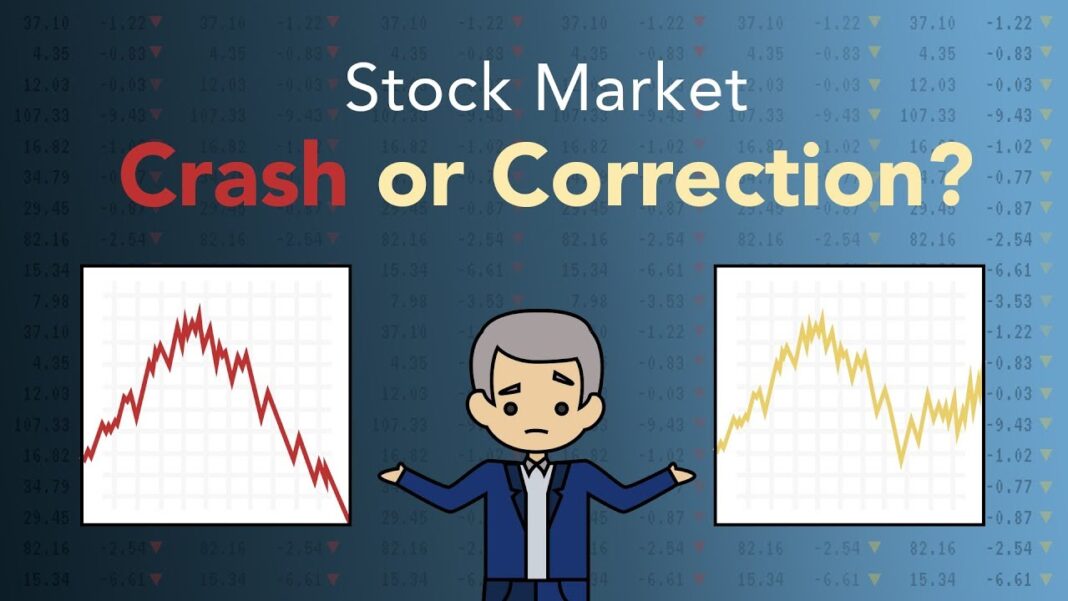Market volatility is a constant companion for traders and investors, shaping the emotional and financial landscape of the financial world. Understanding the nuances of market downturns is crucial for anyone looking to navigate this landscape successfully. Among the various types of market declines, two terms often come up: correction and crash. While they might seem similar on the surface—both indicating a fall in prices—their causes, characteristics, and consequences differ significantly.

Grasping these differences can mean the difference between panic selling and strategic decision-making. This article aims to demystify the concepts of market corrections and crashes, providing traders with the knowledge to interpret market signals wisely and to craft effective responses.
Defining Market Correction and Market Crash
A market correction is generally understood as a decline in the stock market of about 10% to 20% from a recent peak. It is often seen as a natural and healthy part of market cycles, acting as a breather after prolonged upward trends. Corrections tend to develop gradually over days, weeks, or even months, allowing the market and its participants to reset valuations and absorb overbought conditions. Typically, markets recover from corrections relatively quickly, resuming their upward trajectory once the temporary pressures have eased.
In contrast, a market crash is far more severe and sudden. It is characterised by a sharp and often dramatic drop exceeding 20%, usually occurring within a very short timeframe, sometimes even a single day. Crashes are marked by panic selling, heightened volatility, and often widespread fear across markets. The psychological impact of a crash tends to be intense, shaking investor confidence deeply and sometimes leading to lasting economic repercussions.
Understanding these definitions is foundational, as it sets the stage for recognising the varying intensities and implications of downturns in the financial markets. Check over here for more information.
Causes Behind Corrections and Crashes
Corrections often arise from relatively routine factors. After a period of sustained market gains, investors might decide to take profits, causing a gradual pullback in prices. Technical factors also play a role, such as breaking through key moving averages or reaching certain valuation thresholds that suggest stocks are overpriced. Economic indicators like inflation rates, interest rate changes, or disappointing corporate earnings reports can prompt traders to recalibrate their positions. Corrections serve as a mechanism for markets to align more closely with underlying economic realities, without signalling a systemic problem.
Crashes, however, usually stem from deeper and more systemic issues. Financial crises, such as the bursting of speculative bubbles or a collapse in credit markets, can trigger sudden crashes. External shocks, like geopolitical conflicts, unexpected regulatory changes, or global pandemics, can ignite panic and rapid sell-offs. Unlike corrections, crashes are often fueled by investor fear turning into panic, where selling begets more selling in a feedback loop. The broader economic environment frequently reveals cracks that precipitate these crashes, such as high leverage, economic recessions, or liquidity shortages.
Market Behaviour and Patterns
Corrections tend to be more orderly and less volatile compared to crashes. The decline unfolds over a longer period, giving traders and investors time to react, reposition, and recalibrate their strategies. Volume during corrections may increase, but not to the extreme seen in crashes. The overall trend often remains intact, with corrections interpreted as temporary setbacks rather than the start of a bear market.
Crashes, on the other hand, feature abrupt and massive price drops accompanied by spikes in trading volume and volatility. Market breadth—meaning the number of stocks declining versus advancing—plummets, signalling widespread distress. These episodes often involve large gaps down in prices and can be exacerbated by algorithmic trading and stop-loss triggers cascading through markets. Crashes frequently mark the end of bullish phases and the beginning of extended downturns or bear markets.
Impact on Traders and Investors
The consequences of corrections and crashes vary depending on the trader’s style and risk tolerance. For day traders and swing traders, corrections can present profitable opportunities to buy undervalued stocks or short overextended ones. Since corrections are often temporary and less severe, active traders may find these dips ideal entry points or risk-managed exits.
Long-term investors might view corrections as a natural part of investing, a chance to rebalance portfolios or add to positions at more favourable prices. However, crashes can pose a much greater challenge, potentially wiping out significant portions of portfolio value within a short span. Margin calls become a real threat during crashes, forcing some traders to liquidate positions at the worst possible time. Emotional stress during crashes is heightened, sometimes leading to impulsive decisions that undermine long-term goals.
Conclusion
Understanding the differences between market corrections and crashes is vital for any trader or investor aiming to succeed in volatile markets. Corrections, though unsettling, are often manageable and even healthy for markets, providing buying opportunities and preventing bubbles. Crashes, by contrast, are rare but severe, demanding heightened caution, discipline, and protective strategies. By recognising the defining features, causes, and emotional impacts of each, traders can better prepare themselves to respond calmly and strategically.



























